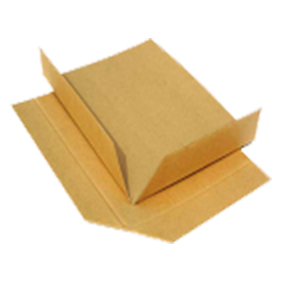Pallet Slip Sheets
Pallet slip sheets are cost-effective alternatives to pallets made from strong kraft liner board layers. These sheets streamline transportation and optimise storage space for material handling and storage. Constructed from durable materials, our pallet slip sheets are compatible with various load types, sizes, and weights.
Efficient Load Handling
Pallet slip sheets offer several advantages, including space optimisation, reduced weight compared to pallets, and cost savings. They are useful in industries that require efficient stacking and loading of goods, such as warehousing, shipping, and logistics.
The slip sheet works with special handling equipment, such as push-pull attachments on forklifts, which grip the sheet and help lift and move the load. The push-pull securely grips the slip sheet via channels, pulling the load onto stable forks for transfer to a container.
Maximise Warehouse Space
With a smooth surface, slip sheets facilitate easy loading and unloading, reducing the need for manual adjustments. They are also reusable and made from recyclable materials, aligning with sustainability goals. Speed up loading and unloading processes with smooth slip sheet surfaces.
- Cost-effective alternative
- Lightweight and durable
- Hygienic and wood-free
- Efficient load securing
- Versatile specifications
- Forklift-friendly handling
- Space-efficient storage
- Rodent and pest prevention
- Single-use disposal
- Eco-friendly and recyclable
To effectively utilize slip sheets in material handling and shipping, consider the following factors:
- Determine the Proper Unit Load: Before selecting a slip sheet, it is important to assess the specifications of the product being transported. Understanding the unit load’s weight, dimensions, and stability requirements helps choose the most suitable slip sheet.
- Select the Appropriate Slip Sheet: The choice of slip sheet should align with the characteristics of the unit load. Finding the ideal slip sheet enables users to load, unload, and transport goods safely. Material composition (cardboard, plastic, or corrugated fiberboard) and size should be carefully considered.
- Ensure Proper Equipment and Training: Having the necessary equipment, such as forklifts or handling machinery, equipped with slip sheet attachments. Adequate training should be provided to operators to ensure they understand how to handle the equipment properly and securely.
- Understand the Functions of the Slip Sheet: Having a comprehensive understanding of how to slip sheets function and how they must complement the material handling equipment being used is important. This knowledge ensures the efficient and effective use of slip sheets, minimizing the risk of damage or accidents during handling and transportation.
- Consider Unloading and Storage Facilities: Before implementing slip sheets, assessing the receiver’s unloading and storage facilities is advisable. Determining whether they have the appropriate equipment, tools, and storage areas compatible with slip sheets helps ensure a seamless transition and efficient operations upon delivery.


